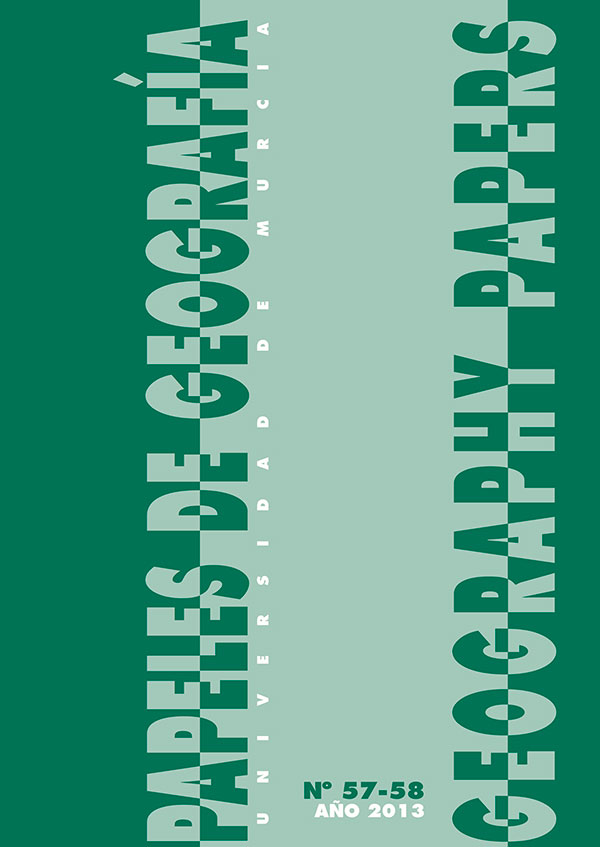Water-wheels in Chile: a vernacular irrigation system in rainfed land
Abstract
Exposed to adverse conditions, human creativity is superimposed. A sample of this virtue is the appearance of the azudas or wheels of water in agriculture. It was dominate the arid and semi-arid, environments achieving an efficient irrigation of fields for cultivation. In America, the examples on the use of water wheels are scarce. They exist as a reference for the implementation of azudas, in the central valley of Chile, in the O’Higgins Region, which have been considered as a sort of extension of the vernacular architecture of the town of Larmahue. Even if they have been recognized nationally and abroad, they have had to face natural disasters, legal abandonment, and what is worse, the lack of interest and resources to maintain them.
Downloads
-
Abstract396
-
PDF (Español (España))395
The manuscripts published in Papeles de Geografía are subject to the following terms and conditions:
1. The publishing house of the University of Murcia (Servicio de Publicaciones de la Universidad de Murcia) keeps the copyright of the published manuscripts favouring and allowing the use and distribution of such works under the licence in 2 below.
© Servicio de Publicaciones, Universidad de Murcia, 2011
2. Manuscripts are published electronically under an Attribution Non-Commercial No Derivatives 3.0 Unported Creative Commons Licence Spain (Legal text). Readers are free to copy, use, share and redistribute the material in any medium or format as long as (i) appropriate credit is given to authors and original source (journal, publishing house and URL); (ii) the material is not used for commercial purposes and (iii) this licence and restrictions are stated.
3. Self-archive. Authors are allowed and encouraged to distribute pre-print versions (prior to evaluation) and/or post-print versions (after evaluation and accepted for publication) of their manuscripts. This favours the dissemination and early distribution of scientific knowledge and citing.





